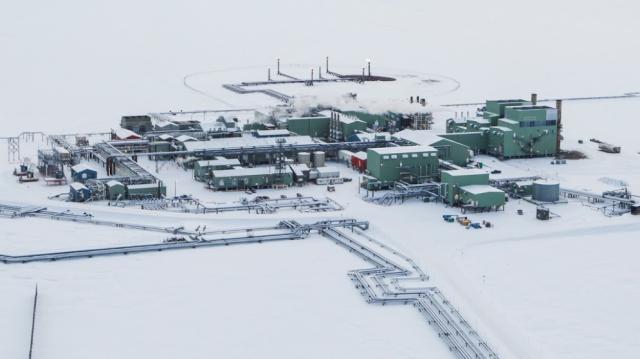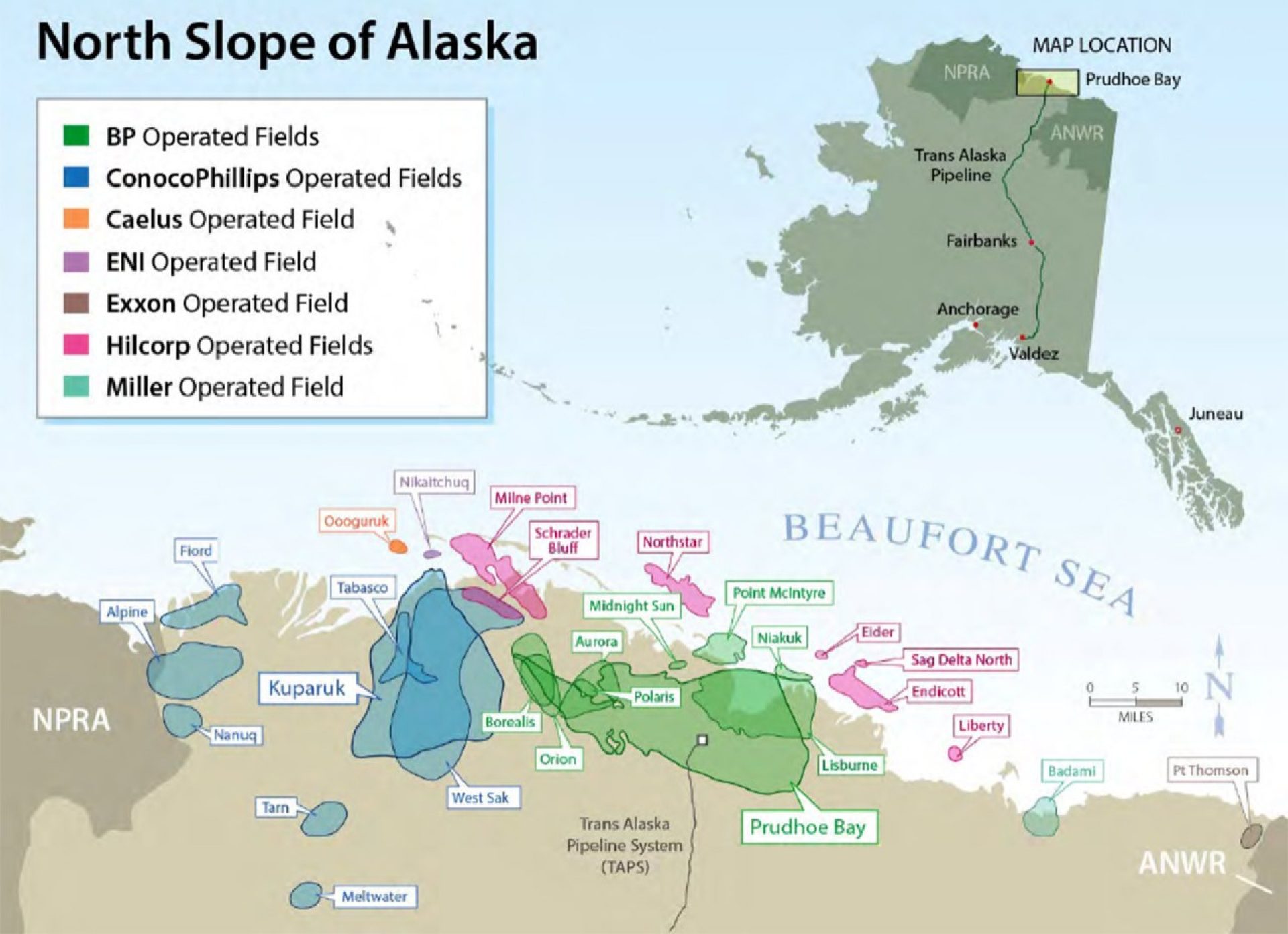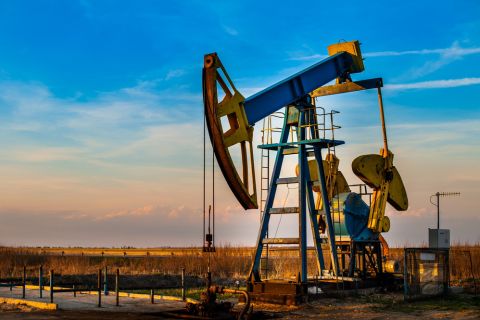
Aerial view of BP Alaska's Prudhoe Bay operations in 2014. (Source: BP Plc)
[Editor's note: Story updated at 2:38 p.m. CDT Aug. 27.]
BP Plc is exiting Alaska through the $5.6 billion sale of its entire business in the state on Aug. 27 to privately held Hilcorp Energy Co.
Upon completion, analysts expect Houston-based Hilcorp will become the second-largest E&P in Alaska. The sale will include BP’s entire upstream and midstream business in the state, including BP Exploration (Alaska) Inc., that owns all of BP’s upstream oil and gas interests in Alaska, and BP Pipelines (Alaska) Inc.’s interest in the Trans Alaska Pipeline System (TAPS).
BP CEO Bob Dudley said the exit of BP from Alaska in no way represents a move away from the U.S. by the London-based oil major.
“We remain very bullish on the U.S. energy sector,” Dudley said in a statement. “In just the last three years we have invested more than $20 billion in the U.S. and we will continue to look at further investment opportunities here.”
BP has continued to develop its business in the U.S. over the past decade. Between 2005 and 2018, the company invested over $115 billion in the U.S., which includes the blockbuster purchase last year of U.S. shale assets from BHP Group Plc.
“However, we are steadily reshaping BP and today we have other opportunities, both in the U.S. and around the world, that are more closely aligned with our long-term strategy and more competitive for our investment,” Dudley added.
In the second quarter of 2019, BP’s net oil and gas production from the U.S. averaged over 921,000 barrels of oil equivalent per day (boe/d) from major interests in Alaska, onshore Lower 48 and deepwater Gulf of Mexico. In Alaska, in particular, BP’s net oil production from the state in 2019 is expected to average almost 74,000 barrels a day, according to a company release.
Dudley also noted that the sale of its Alaska business underpins BP’s two-year $10 billion divestment program.
“The majors are making progress with their divestment campaigns,” Wood Mackenzie analyst Rowena Gunn said in an emailed statement. “This will mean long-held assets and territories will be let go.”
BP began working in Alaska in 1959, drilling the confirmation well for the Prudhoe Bay oil field in 1968 and in the mid-1970s helped build the 800-mile Trans Alaska Pipeline. BP had already made a series of regional assets divestments in Alaska since 2014—mostly to Hilcorp, Gunn said—as focus shifted to deepwater and tight oil assets.

Prudhoe Bay, which BP operates with a 26% working interest, is one of the most prolific oil fields in U.S. history. The oil field has to date produced over 13 billion barrels of oil and is estimated to have the potential to produce more than one billion further barrels.
Wood Mackenzie values the BP Alaska assets at a slight premium to the $5.6 billion consideration, Gunn said noting that Prudhoe Bay makes up over 60% of the price tag.
Hilcorp Energy entered Alaska Cook Inlet in 2011 and the North Slope in 2014. Hilcorp Alaska, an affiliate of Hilcorp Energy based in Anchorage, already holds interests in 31 assets across the Cook Inlet and North Slope, producing 41,000 boe/d, according to Wood Mackenzie.
“This deal [with BP] vaults Hilcorp to be the second-largest Alaska producer and reserves holder, behind only ConocoPhillips,” Gunn said. “Continued investment in maintaining Prudhoe Bay will be the company’s main endeavor.”
Roughly 1,600 BP employees are currently associated with the company’s Alaska business. BP said in its company release that it is “committed to providing clarity about their future as soon as possible” as part of the transition process with Hilcorp.
Subject to state and federal regulatory approval, the transaction is expected to be completed in 2020.
Recommended Reading
Texas LNG Export Plant Signs Additional Offtake Deal With EQT
2024-04-23 - Glenfarne Group LLC's proposed Texas LNG export plant in Brownsville has signed an additional tolling agreement with EQT Corp. to provide natural gas liquefaction services of an additional 1.5 mtpa over 20 years.
US Refiners to Face Tighter Heavy Spreads this Summer TPH
2024-04-22 - Tudor, Pickering, Holt and Co. (TPH) expects fairly tight heavy crude discounts in the U.S. this summer and beyond owing to lower imports of Canadian, Mexican and Venezuelan crudes.
What's Affecting Oil Prices This Week? (April 22, 2024)
2024-04-22 - Stratas Advisors predict that despite geopolitical tensions, the oil supply will not be disrupted, even with the U.S. House of Representatives inserting sanctions on Iran’s oil exports.
Association: Monthly Texas Upstream Jobs Show Most Growth in Decade
2024-04-22 - Since the COVID-19 pandemic, the oil and gas industry has added 39,500 upstream jobs in Texas, with take home pay averaging $124,000 in 2023.
What's Affecting Oil Prices This Week? (Feb. 5, 2024)
2024-02-05 - Stratas Advisors says the U.S.’ response (so far) to the recent attack on U.S. troops has been measured without direct confrontation of Iran, which reduces the possibility of oil flows being disrupted.




